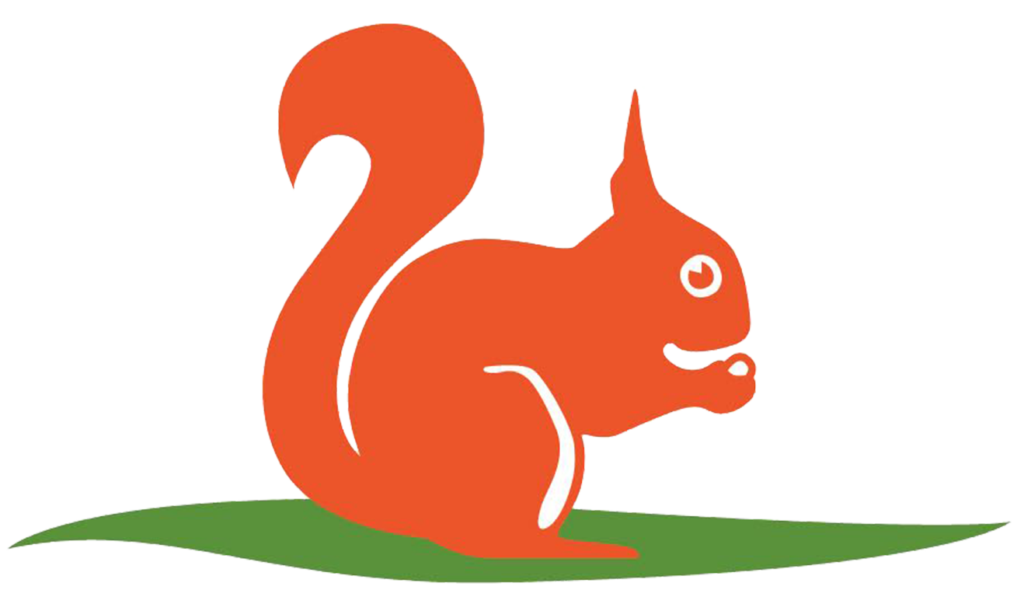The Case for Reds
“Invasive non-native species not only challenge the survival of some of our rarest species but damage our natural ecosystems as well as costing the economy more than £1.7 billion per year. The law requires management measures to be put in place ….”
– Minister for Rural Affairs and Biosecurity, Lord Gardiner.
There are 30 invasive non-native animal species listed as a concern in the UK because of their invasiveness and ability to establish successfully, often to the detriment of native species. Those considered widely spread include grey squirrel, muntjac deer, signal crayfish and terrapins.
Grey squirrels have a significant impact on biodiversity within woodland habitats – especially old-growth forests, due to bark-stripping broadleaf trees – exposing timber to fungal and insect attack and thus having an impacting on the woodland’s health and resilience. Old or ancient forests are vital for the survival of many fungi, bugs, reptiles, birds and other marvellous creatures and plant species that depend on ancient and veteran trees as their habitat, or as a vital food source species (see here). Some species directly affected by greys include songbirds, dormice and our native red squirrel. Woodlands also play a valuable role in carbon sequestration, which is impacted if trees are damaged or killed.
The grey squirrel remains of great concern and is included in the IUCN’s international list of “100 worst invasive non-native species”. Red squirrels are conversely listed as ‘endangered’ on the recent Red List for Britain’s Mammals.
Grey squirrels compete with red squirrels for food and transmit the squirrelpox virus, which is fatal to reds but not greys. Research published in the Journal of Animal Ecology that competition from grey squirrels causes increased chronic stress in native red squirrels, which has an impact on their ability to reproduce and thrive.
The collective effort to protect the remaining red squirrel populations and promote their long-term recovery across the English landscape can, in addition, be justified for four key reasons:
- ↳ Intrinsic value:
- Firstly, the red squirrel has its own value as a native wild species and is worthy of protection for its own sake. Globally, the red squirrel has a wide distribution across the temperate and boreal forest zones of Europe. It is assessed as Least Concern (decreasing) and being at low current risk of extinction on the International Red List of Threatened Species. However, at a national level, the species has declined significantly across much of its former range and is assessed as endangered and threatened by extinction in England (Mathews et al., 2020i). Without sustained conservation effort, the species is at high risk of extinction in its current mainland range. The red squirrel is an indigenous, wild element of England’s fauna and landscapes. It should and could be resident throughout England in all of its suitable habitats.
- ↳ Extrinsic value: Secondly, red squirrels are very useful to humanity. It is in our interests to conserve the species because of what red squirrels do for us. The presence of healthy populations provide significant benefits for people, local economies and wider society through the ‘ecosystem services’ they bring. These include significant contributions to the local economy (e.g. through wildlife tourism), personal health, wellbeing and resilience benefits – and contributing to civic pride and community cohesion. These benefits are currently lost to most people and communities because of the loss of the species – even though much of the English landscape could support viable and thriving populations. The lives, wellbeing and culture of people and local communities will all benefit from red squirrel conservation and recovery wherever this is possible. Most importantly, the species can provide an accessible means of engaging local people and visitors in local environmental issues, helping to ‘bridge’ knowledge gaps about nature recovery networks and other issues such as climate change resilience. Seeing, enjoying and understanding red squirrels can inspire people to get more actively involved with conservation activity and looking after their local environment. The charismatic appeal of red squirrels provides an ideal opportunity to tell a number of environmental stories to the general public. They can help communicate and promote a wider and deeper understanding of the ecological issues and challenges that society faces in the 21st Century.
- ↳ A moral imperative: Thirdly, there is a moral duty and obligation for us to “right the wrongs” and suffering that humanity has inflicted on this species historically through the reckless and deliberate introduction of the American grey squirrel in the 19th Century. There is a collective responsibility to promote the recovery of wild species in general – and especially flagship and much-loved species like red squirrels. As a species, humans were responsible for the introduction of grey squirrels, an Invasive Alien Species which has led to the near-extinction of native red squirrels on the English mainland. This has inflicted unimaginable and unquantifiable suffering on red squirrels directly through starvation and indirectly through the transmission of squirrel pox. This disease causes a painful death in red squirrels after a prolonged and distressing illness. Previous generations failed to deal effectively with the problem and there is now a responsibility for us to reverse the ecological damage our species has caused. If we lose red squirrels now, there is likely to be an irresistible clamour for their re-introduction as has happened in previous centuries and for other species. It will be considerably cheaper and easier to prevent their demise than to reintroduce them at a later date.
- ↳ Collateral benefits: The actions required to conserve and protect red squirrels will contribute to several associated ‘no-regret’ benefits for tree and woodland health. These include: reducing the amount of economically significant damage caused to trees and woodlands through grey squirrel damage; reducing the degree of damage to newly planted trees and woodlands by grey squirrels which can inhibit their establishment. This could be significant and could help deliver Government tree and carbon targets more successfully.
Extract from England Red Squirrel Action Plan 2021 Draft
